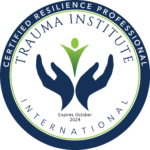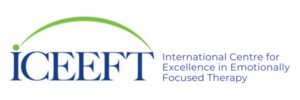Counselling requires a specialized approach that takes into account their developmental stages, cognitive abilities, and emotional needs. Here are key considerations for counseling these age groups:
- Developmental Understanding: Recognize and understand the developmental stages of children and adolescents; Tailor counseling approaches based on age-appropriate language and concepts; Consider the impact of cognitive and emotional development on their ability to express themselves.
• Understand:
o Early attachment
o Environmental, educational experiences
o Abuse, trauma
o Genetic aspects
o Grief
o Family unit (parenting styles, relationships, functioning, separation/divorce, domestic violence, blended, cultural issues, etc)
• Age 7-8:
o the child is more aware of others’ perceptions.
o complains about other children’s reactions
o wants to behave well but can’t keep attention high enough.
o tries to express feelings but resorts to aggression if upset.
• Age 9-10
o Narrows down the circle of friends
o Might be rude, argumentative or affectionate.
o Can withdraw from family activities.
o Needs to feel competent in class or to meet expectations of parents /teachers
• Age 11 to 15
o Thinking more logically, becoming more introspective, moodier, needs privacy.
o Values opinions of friends, tries different behaviours / outfits to define themselves
o Wants to fit
• Age 16 to 18
o Strives to be independent and emotionally detached
o Has undergone /is going through biological, cognitive, social, moral, spiritual, psychological changes
o Starts to understand strength / weaknesses.
o Able to deal with abstract concepts but can make mistakes which undermine confidence - Building Trust and Rapport:
• Establish a safe and trusting relationship to encourage open communication.
o Calm all the way.
o Teach them self-regulation
• Be patient and allow time for the child or adolescent to feel comfortable.
• Use play therapy, art, or other expressive techniques for younger children who may find it challenging to express themselves verbally. - Active Listening:
• Practice active listening to understand their perspectives and concerns.
• Validate their feelings and experiences to create a supportive environment.
• Use reflective questioning to delve deeper into their thoughts and emotions. - Age-Appropriate Language:
• Communicate in language appropriate for their age and developmental level.
• Avoid using jargon or complex terms that may be confusing or intimidating. - Involvement of Parents/Guardians:
• Collaborate with parents or guardians to gain insights into the child’s or adolescent’s environment. Pay attention and involve appropriate support where cases of ‘’dysfunctional families’’ where parents are:
o Experiencing mental health issues or low IQ – they place responsibility on the child, who in return learn to ignore their wishes and needs and feel guilty that they cannot care for their parents
o Having drug or alcohol addiction– promises are not kept, rules are bent, parents are either too strict or uncaring and children are not allowed to express their emotions, generating later problems with mistrust, anger
o Over functioning – controlling, not allowing appropriate independence , dominant, taking all the decisions – children feel they have no power, they are afraid to take decisions or might feel guilty taking a decision as that might be seen as disloyal to their parents
o Sexual abuse – children ignore their emotions and feelings and suffer later on from mistrust, difficulty with intimacy, difficulty accepting and releasing the past, self-blame, anger
o Co-dependency – one of the members is too needy and the other one controls without addressing real needs or desire; the co-dependent sacrifices their needs, leading to ‘’serving others’’ mentality and potentially entering later on in life relationships where they are abused, destructive, etc
• In the above cases, work with children or adolescents on:
o Realizing their own self value /self-worth
o Learn to be assertive.
o Set boundaries of how much responsibility
• Provide guidance and support to parents in managing and understanding their child’s behavior. Emphasize parental behaviors that are not constructive
o Physical / verbal aggression
o Silent treatment
o Anxiety, hopelessness or passivity - Exploration of Feelings and Behaviours:
• Help children and adolescents explore and understand their feelings and behaviors.
o Help them understand the stages of identity
Identity diffusions (uncertainty about career path, own skills, fears of committing to a particular identity)
Identity foreclosure – committing prematurely to a career without exploration (parents decide, taking the example of older siblings or other ‘’successful’’ models)
Identity moratorium – active exploration with low commitment to any identity
Identity achievement – healthy decision about career direction
• Assist them in developing coping strategies and problem-solving skills.
o Help them develop positive view of life
o Recognize their strength
o Express themselves in appropriate and understandable way - Use of Creative Therapies:
• Incorporate creative therapies such as:
o Art or music therapy to facilitate expression.
o Play therapy (for smaller children work by using a toy that represents them)
o Story telling
• Allow non-verbal avenues for communication, especially for younger children. - Goal Setting and Positive Reinforcement:
• Collaboratively set achievable goals with the child or adolescent.
• Provide positive reinforcement and praise for progress and effort.
o Behavioral therapy – what is learnt can be unlearned and a certain degree of reinforcement (positive reinforcement) will bring certain desirable results
o Modelling – observation and imitation - Confidentiality and Boundaries: Clearly explain confidentiality and its limits, especially with adolescents. Respect privacy while maintaining a duty to report any concerns about safety or well-being.
- Crisis Intervention: Be prepared to handle crises and have protocols in place for immediate intervention if necessary. Know when and how to involve other professionals, such as child protection services or emergency mental health services.
Counseling for adolescents can cover a wide range of topics, addressing their unique developmental challenges and concerns. Here are some common counselling topics and internal conflicts that adolescents might experience:
- Identity and Self-Discovery, Personal Goals and Motivation:
o Exploring and understanding personal identity.
o Coping with questions like “Who am I?” and “What do I want to become?”
o Setting and working towards personal goals.
o Enhancing motivation and perseverance. - Academic Stress and Performance, Career and Future Planning:
o Managing academic pressures, including exams and expectations.
o Developing effective study habits and time management skills.
o Trying too many roles and seeking approval
o Understanding the value of accomplishments (career chasing)
o Addressing helplessness and failing
o Exploring career interests and aspirations.
o Planning for post-secondary education or vocational paths. - Peer and Romantic Relationships:
o Navigating friendships, peer pressure, and social dynamics.
o Note and counsel when bullying happens:- there is an unfulfilled need of control/power and/ or past experience of being bullied /learning difficulties/loneliness/low self-esteem – need to feel bigger by using force
- its repetitive /recurrent
- has the aim of undermining through threatening, verbally or physically.
o Navigating romantic relationships and dating.
o Understanding healthy relationship dynamics and boundaries.
o Developing healthy communication and conflict resolution skills.
- Family Issues:
o Dealing with family conflicts or changes.
o Communicating with parents or guardians about personal challenges.
o Child abuse:- Emotional: fear, humiliation, gilt, manipulation
- Verbal: criticism, insults, threats, frequent voice disapproval
- Physical: aggressive behavior, punching, kicking, neglecting needs
- Sexual: inappropriate touching, behavior that is kept secret
- Emotional Well-being, Anger Management, body-image and self-esteem:
o Understand triggers & symptoms of stress, anxiety, and depression, mood swings
o Exploring and managing anger and frustration.
o Addressing concerns related to body image and self-confidence.
o Addressing negative self-talk – teaching to choose positive thoughts
o Developing healthy outlets for expressing emotions.
o Promoting a healthy self-image and self-acceptance.
o Building emotional resilience and self-esteem.- Discuss pros and cons of making a change
- provide feedback and psycho-education
- Encourage to visualize outcome
- Help them design actions to overcome obstacles
- use empathic listening and empower positive self-perceptions
- Substance Use and Abuse:
o Discussing the risks and consequences of substance use.
o Developing strategies to resist peer pressure related to drugs and alcohol. - Sexuality and Sexual Health:
o Addressing questions about sexuality and sexual health.
o Providing information on safe practices and consent. - Technology and Social Media Use:
o Discussing responsible use of technology and social media.
o Addressing cyberbullying and online safety. - Coping with Transitions:
o Managing changes such as moving, changing schools, or parental divorce.
o Developing coping strategies for life transitions. - Grief and Loss:
o Coping with the loss of a loved one or significant changes. (reassure them, help them accept the experience and the emotions associated)
o Providing support through the grieving process. (help them find additional sources of support and own inner resources)
o Use creative arts through colors, drawings, singing, poems, writing a story, daily journaling, creative images
o Explore the topic of loss, encourage to ask questions and to reflect, help them become more aware of internal states and external support
Counseling topics for adolescents should be tailored to their individual needs, ensuring a safe and supportive environment for discussing these issues with a trained professional. Continue reading here or book a session.





